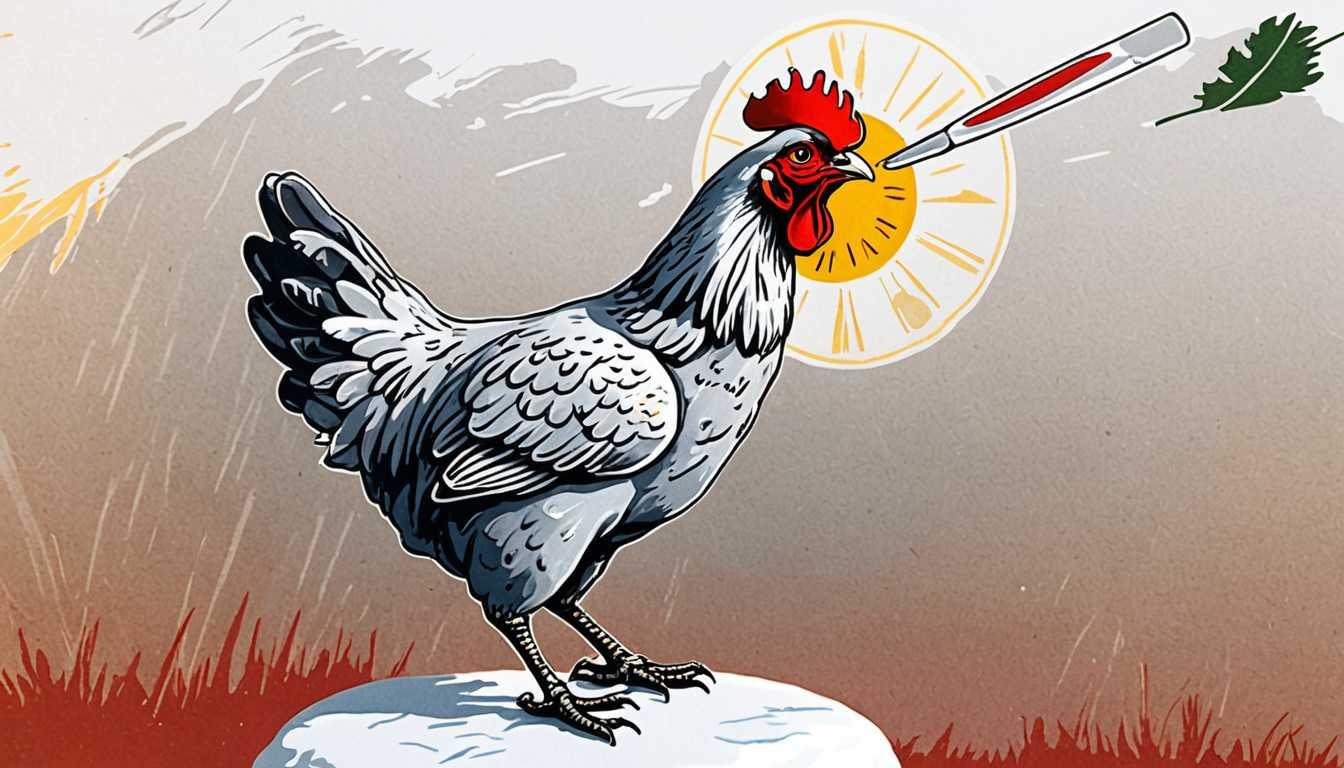From Bones to Viruses: A Deadly Evolution
December 2023
University of Oxford
Introduction
Dive into a journey through time as scientists from the University of Oxford unravel the mysteries of a chicken virus that's gotten bolder and badder! Using ancient DNA from chicken bones unearthed across Europe, this international team has traced the evolution of Marek's Disease Virus, a scourge costing the poultry industry a whopping $1 billion annually. Their groundbreaking research, now featured in Science, could pave the way for innovative treatments. Who knew chicken bones could reveal so much about viral villains?
READ FULL ARTICLEWhy It Matters
Discover how this topic shapes your world and future
Unraveling the Past, Shaping the Future
Why do ancient viruses and their evolution matter to us today? Imagine a detective story where scientists are the detectives, ancient DNA is the evidence, and deadly viruses are the culprits. This story isn't just fascinating – it's crucial for understanding how diseases evolve to become more dangerous over time. The case of Marek's Disease Virus (MDV) in chickens shows us that by looking into the past, we can find clues to tackle present and future viral threats. This research doesn't just impact chickens or the poultry industry; it has broader implications for how we develop treatments for all kinds of viral infections. For you, this adventure into ancient DNA and virus evolution could spark interest in biology, history, or even a career in scientific research. It's about connecting dots across time to solve puzzles that matter to our global community.
Speak like a Scholar
Virulence
How harmful a virus is. A virus with high virulence is very dangerous and can cause severe disease.
Genome
The complete set of genes or genetic material present in a cell or organism. It's like the blueprint for building and maintaining that organism.
Archaeological
Relating to archaeology, the study of human history and prehistory through the excavation of sites and the analysis of artifacts and other physical remains.
DNA (Deoxyribonucleic Acid)
The molecule that carries the genetic instructions used in the growth, development, functioning, and reproduction of all known living organisms and many viruses.
Cellular Assays
Laboratory tests with cells to measure the biological activity of substances, like viruses, on those cells.
Evolution
The process by which different kinds of living organisms are thought to have developed and diversified from earlier forms during the history of the earth.
Independent Research Ideas
The Evolution of Viruses Over Centuries
Investigate how other viruses have evolved over time and what this tells us about the future of viral diseases. This combines biology with a bit of detective work in history.
The Role of Vaccines in Viral Evolution
Explore how vaccines can sometimes cause viruses to become more virulent, using MDV as a case study. This topic sits at the intersection of biology and medicine.
Ancient DNA Techniques in Modern Science
Delve into how scientists extract and analyze DNA from ancient remains and the technological advancements that have made this possible. It's a blend of archaeology and cutting-edge science.
The Impact of Animal Diseases on Human Societies
Examine how diseases in animals, like MDV in chickens, have affected human history, economies, and cultures. This topic merges history, economics, and biology.
Genetic Engineering for Disease Resistance
Research how genetic engineering could be used to create disease-resistant animals or even humans, inspired by insights from studies like the MDV research. This topic explores the ethical, biological, and technological aspects of genetic modification.
Related Articles

Giant Kangaroo: The Quadrupedal Mystery
July 2024
University of Bristol

Komodo Dragons: Teeth of Iron and Mystery
July 2024
King's College London - News

CRISPR: Chickens' Shield Against Bird Flu
October 2023
MIT Technology Review

Lonely Boy's Genetic Odyssey
July 2024
JSTOR Daily

Gene-Edited Pork Revolution
February 2024
Smithsonian Magazine